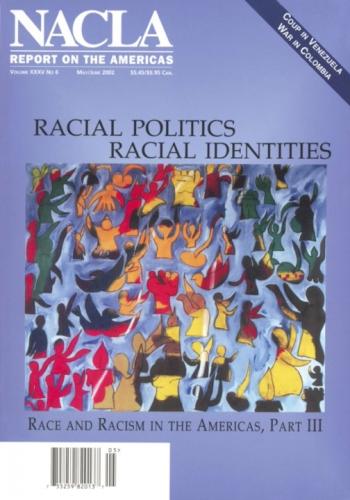Report
Most of what the world knows as Brazilian culture, and what Brazil projects in international performance, is of African origin. When one thinks of the music and dance of the country, the image that usually comes to mind is the compelling rhythms and intricate footwork and hip movements of samba, and the excitement of carnival.
Lourdes Giordani and María Eugenia Villalón
When Hugo Chávez campaigned for the Venezuelan presidency in 1998, he not only expressed solidarity but claimed kinship with the country’s small indigenous population. One of his grandmothers, he told a Venezuelan public accustomed to seeing non-Indian “criollos” in high public office, was a member of the Pumé ethnic group of the Venezuelan llanos.
During my fieldwork in Colombia, I found that music and dance were important to understanding patterns of racism and racial identity formation. In the early 1980s, when working in the village of Unguía, near the Panamanian frontier, it was evident that racial and ethnic identities were linked to musical preferences.[1]
Back in 1999, New York magazine was renamed Nueva York, at least for the week of September 6. The Spanish word on the issue was an eye-catcher for readers of the popular weekly, and attested to the currency of things, and words, “Latin” among the contemporary public in the United States.
Half an hour’s drive east of Havana is the suburb of Alamar, home to 300,000 Cubans. Built in the early 1970s, it is one of the largest housing projects in the world, made up of massive, Soviet-designed, walk-up buildings spread across 16 zones divided by stretches of tropical vegetation.
“Allpamanda! Kawsaymanda! Jatarisun!” (“For our land and our life, we shall arise!”) These Quichua words echoed in the streets as a multitude seized the church of Santo Domingo in Quito on May 28, 1990, turning it into a national arena of political dispute.
Afro-Latino activists and development workers had long harbored high hopes that the UN World Conference on Racism, held late last summer in Durban, South Africa, would prove to be a watershed in the struggle for racial justice in the Americas.
R. Aída Hernández Castillo
One thing I am clear about is that since I realized, at the age of 13 or 14, that something is not quite right with being a woman, I had a change of conscience. That was when I discovered that there were injustices done towards women.

